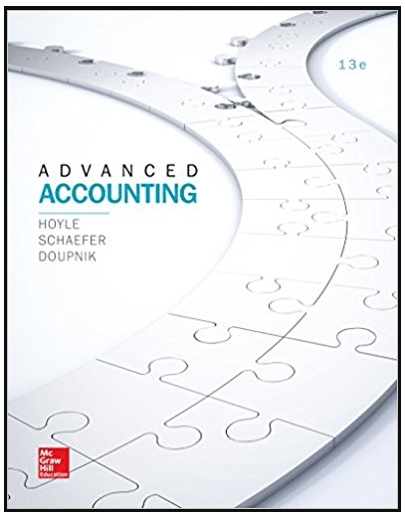Foxx Corporation acquired all of Greenburg Company's outstanding stock on January 1, 2011, for $600,000 cash. Greenburg's
Question:
Foxx Corporation acquired all of Greenburg Company's outstanding stock on January 1, 2011, for $600,000 cash. Greenburg's accounting records showed net assets on that date of 5470,000, although equipment with a 10•year life was undervalued on the records by 590,000. Any recognized goodwill is considered to have an indefinite life. Greenburg reports net Income In 2011 of $90,000 and $100,000 in 2012. The subsidiary paid dividends of $20000 in each of these two years. Financial figures for the year ending December 31, 2013, follow. Credit balances are indicated by parentheses.
-1.png)
-2.png)
a. Determine the December 31. 2013. consolidated balance for each of the following accounts: Depreciation Expense Buildings Dividends Paid Goodwill Revenues Common Stock Equipment b. How does the parent's choice of an accounting method for its investment affect the balances computed in requirement (a)?
c which method of accounting for this subsidiary is the parent actually using for internal reporting purposes?
d If the parent company had used a different method of accounting for this Investment, how could that method have been identified?
e. What would be Foxx's balance for retained earrings as of January 1. 2013. if each of the following methods had been in use?
Initial value method
Partial equity method
Equity method
Goodwill is an important concept and terminology in accounting which means good reputation. The word goodwill is used at various places in accounting but it is recognized only at the time of a business combination. There are generally two types of... Corporation
A Corporation is a legal form of business that is separate from its owner. In other words, a corporation is a business or organization formed by a group of people, and its right and liabilities separate from those of the individuals involved. It may...
Step by Step Answer:

Advanced Accounting
ISBN: 978-1259444951
13th edition
Authors: Joe Ben Hoyle, Thomas Schaefer, Timothy Doupni





